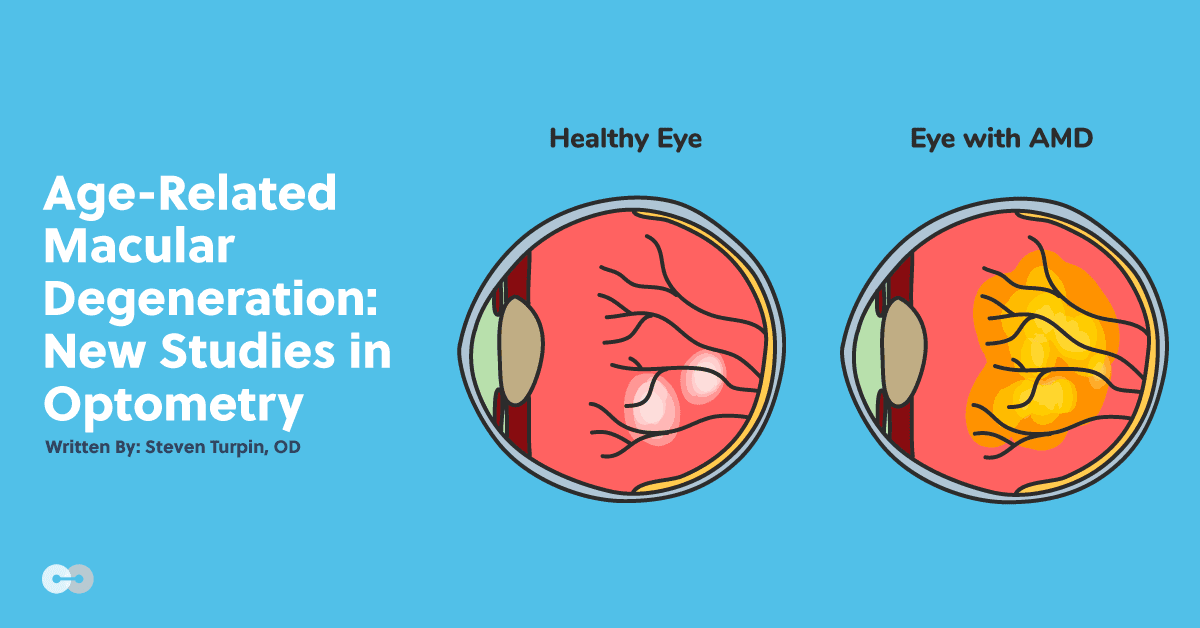During the COVID 19 pandemic, most of us have had to shutter our clinics to routine care and provide essential services only. While many might think that only includes acute ocular emergencies, those with chronic, sight threatening conditions in need of close monitoring qualify as essential as well. Advanced and exudative macular degeneration (AMD) definitely falls into this category for most providers, especially in cases where patients are receiving injections. This month’s review looks at three new studies related to AMD development and treatment.
Saturated fat intake correlated with early AMD risk
From the March 2020 issue of Investigative Ophthalmology and Visual Science came an article exploring the relationship of dietary intake of saturated fat and early AMD risk. 3988 Japanese subjects were given a food frequency questionnaire to evaluate the percentage of total energy intake from fatty acids. Additionally, fundus photos from each subject were evaluated for the presence and severity of AMD. The group with highest estimated intake of saturated fatty acids (approximately 15 g/day) had the lowest incidence of early AMD. The group with lowest intake ( median approximately 9 g/day) had the highest. Polyunsaturated fat (omega-3, omega-6, etc.) intake had no significant correlation with incidence of AMD.
Interestingly, median intake of the group consuming the most saturated fat in this Japanese cohort is similar to the median intake of the group consuming the least saturated fat in the Blue Mountain Eye Study done in the USA. Based on these findings, the authors suggest there may be a U-shaped risk curve with consumption of saturated fats and early AMD.1 Somewhere between 15-20 g of saturated fat per day being the “sweet spot”.
That said, studies involving food questionnaires involve confounding factors that can not be discounted. Definite dietary recommendations cannot be made based on this study. What the study does is move us a little closer to understanding how a disease like AMD, with a strong metabolic component, is affected by what we eat. Additionally, it suggests certain micro or macronutrients are neither all bad or all good, but potentially beneficial in the correct dosage.
Recurrence of exudative AMD on a 12 week injection cycle
Researchers published a recent article in Retina looking at recurrence rates of active neovascularization and swelling. Most physicians performing anti-VEGF injections do so following a “treat and extend protocol.” The goal is to extend the interval between injections as long as possible while still maintaining the inactivity of wet AMD.
Charts from a single practice were reviewed and 57 patients who had their treatment interval extended to 12 weeks continued to receive maintenance injections at this interval over a period of 2 years. Recurrence rates for this patient group increased by 10% every year after beginning the 12 week maintenance schedule. 5 out of 8 eyes that discontinued all treatment after reaching the 12 week interval experienced recurrence at an average of 4 months.2
Clinically, it is important for optometrists to have an understanding of recurrence rates and timelines for our wet AMD patients. Often, we are seeing our patients for their primary care, dry eye, glaucoma and other ocular health needs between the intervals of visits to their retinal specialists. It is not uncommon for us to be the ones picking up recurrence first.
Glaucoma treatment and efficacy of anti-VEGF injections
A study appearing in a recent issue of Clinical Ophthalmology investigated the relationship between use of ocular hypertensives and longevity of anti-VEGF treatment. How exactly anti-VEGF drugs are cleared from the body is still not known. But, one theory suggests the major route of clearance is through the anterior chamber. If this is the case, reducing the flow aqueous through use of ocular hypertensives could theoretically extend the treatment effect of an anti-VEGF injection.
A matched retrospective cohort of 234 total patients was included for the study. Half of the group used some form of topical glaucoma treatment and the other half did not. At the end of 1 year of treatment, there was no significant difference in visual acuity, number of anti-VEGF injections, or percentage of patients that switched to a secondary anti-VEGF medication. When the treatment groups were separated by class of glaucoma medication, there was still no significant difference between the groups.3
Clinically, we should not expect that our glaucoma patients receiving injections for exudative AMD to benefit from an enhanced treatment effect as a result of ocular hypotensive use. Patients often ask questions about whether treatment for glaucoma will help other eye issues. The answer in this case is, unfortunately, no. However, the study also suggests that concurrent ocular hypotensive treatment does not appear to make anti-VEGF injections less effective either.
In the end
We need to be well-rounded in our care of our AMD patients. Staying current not only with new treatments, but preventive strategies, risk profiles of patients, and the consequences of concurrent ocular issues (among many other things) will help us to provide more customized care depending on unique circumstances. And more customized care leads to better patient outcomes! While the unknowns of AMD still far outweigh what we do know, each new study gives us a new piece to the puzzle.
References
- Sasaki M, Harada S, Tsubota K, Yasukawa T, Takebayashi T, Nishiwaki Y, Kawasaki R. Dietary Saturated Fatty Acid Intake and Early Age-Related Macular Degeneration in a Japanese Population. Invest Ophthalmol Vis Sci 2020;61:23.
- Hwang RY, Santos D, Oliver SCN. RATES OF EXUDATIVE RECURRENCE FOR EYES WITH INACTIVATED WET AGE-RELATED MACULAR DEGENERATION ON 12-WEEK INTERVAL DOSING WITH BEVACIZUMAB THERAPY. Retina 2020;40:679–85.
- Modjtahedi BS, Luong TQ, Chiu S, van Zyl T, Lin JC, Fong DS. Treatment Course of Patients with Exudative Age-Related Macular Degeneration Using Ocular Hypotensives. Clin Ophthalmol 2020;14:187–95.
